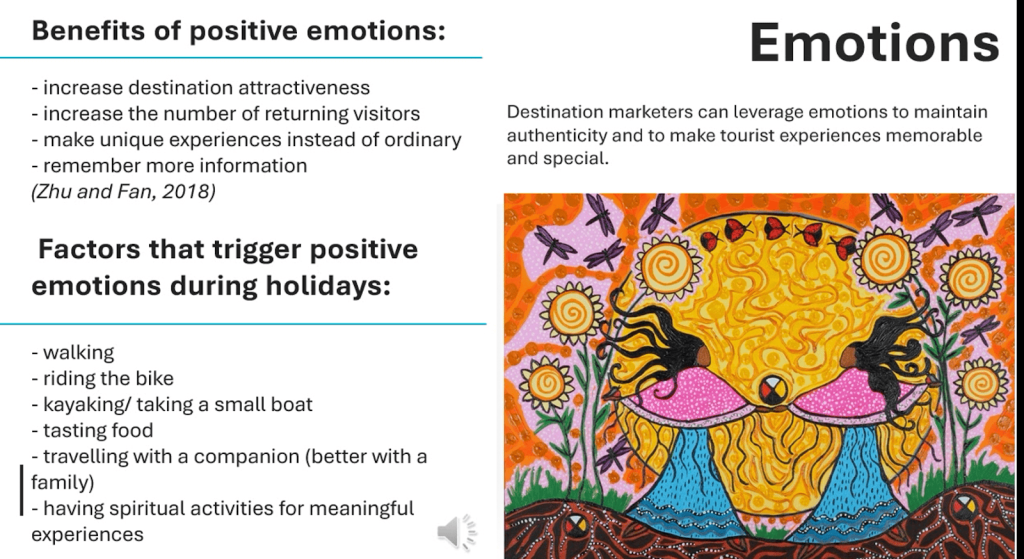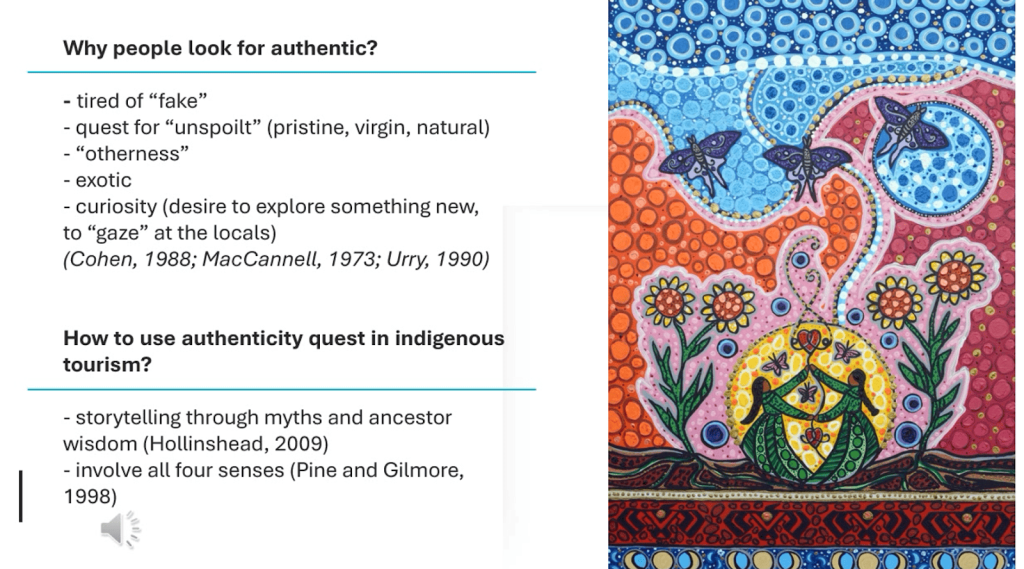
Between Yoga Mats & Propaganda Ribbons: My Journey Through Imagined Communities
Introduction: The Emotional Core of Authenticity
I dissect Benedict Anderson’s imagined communities through two defining chapters of my life: finding global kinship in yoga’s spiritual practice, and witnessing my homeland’s patriotic symbols morph into nationalist weapons. This essay maps how belonging can both heal and divide – and how tourism can become a force for inclusive cultural connection.
May 29, 2022
School of Communication and Culture, Royal Roads University
Global Thought and Communication
“The world is so empty if one thinks only of mountains, rivers & cities; but to know someone who thinks & feels with us, & who, though distant, is close to us in spirit, this makes the earth for us an inhabited garden.”
― Goethe
Introduction
In this essay, I will talk about two imagined communities that occurred in my life, reflecting on whether these affiliations can emulate a form of nationalism. My devotion to yoga illustrates how I developed the idea of solidarity with the group and discovered people with the same values and spirit. My experience with the Russian community of “St. George’s Ribbon” explains how the good ideas of the government turn into manipulation of public consciousness for the sake of one group of people’s interests. At the end, I will share my priorities regarding national identity based on the group discussions.
To fully investigate the subject, I will use Anderson’s definition of imagined communities (1983) more extensively, not only focusing on their political explanation. Imagined communities are groups of people who show solidarity, unity, camaraderie, and support for each other. This invisible force allows people to think about themselves not as lonely individuals but as a part of a group. Anderson explained why vision lies in the essence of the concept: because these groups are projections of peoples’ minds which are intangible, not physical. They are imagined because most of its members will never meet each other or hear of them, yet they are united by the shared image that lies in their minds.
Yoga community and the sense of solidarity
The yoga community falls under the definition of Anderson’s concept of imagined communities. Because the members are not able to ever meet all the other participants but have ties connected with the same ‘kinship’ and ‘religion.’ Yoga is not a new invention. People practiced it over 5,000 years ago (Newcombe, 2009). However, only with the development of the printed word did the yoga movement spread across the globe and from India, conquering the hearts and minds of people from different religions and cultural backgrounds.
Ten years ago, I included yoga practices in my daily life. At the beginning I underestimated the power of yoga because I supposed that asanas were just exercises to make body more flexible. When I decided to achieve a higher level, I had to join yoga class where I studied the roots of yoga and discovered its spiritual magic. I have learned about mindfulness, patience, resilience. I found the answers to the questions that science could never give me. Anderson gave a very accurate observation when he explained the strength of imagined communities over Marxism-like ideologies. He noted that they answer the questions of the essence of the universe and explain why parents lose their children through the response of fatality or karma. While “evolutionary/progressive styles of thought” answer “with impatient silence.” Joining the yoga community enabled me to understand myself and to connect with like-minded people who share the same values and aspirations and have the same vision about themselves as individuals.
I remember how attentive and compassionate instructors and students from my yoga class were when I first joined them. This care and support made me feel special. The only idea of belonging to a group of people who have the same interests, values and the same spirit affected my concept of solidarity as a unity among individuals with common interests. The culminating point in this community became the celebration of International Yoga Day, when I had a deep feeling (emotional and physical at the same time) of solidarity with people who I do not know and will never know. On that day I was doing 108 Surya Namaskar – morning sun salutations, alone in my garden. It was not easy because it required physical strength and constant control of my breath, but the idea that people around the world at that particular moment were doing the same thing as me, cheered and motivated me to continue. I did not see the members of my community. Still, I sensed how we were connected spiritually with some invisible threads.
Inclusive and exclusive communities
Yoga practices cater to both material and spiritual issues of humanity. Covering these two essential aspects in one community made yoga widespread and kept attracting new members. Yoga ideas are broad; thus, this community is inclusive because anybody can find what reflects their values and goals. However, some communities may be exclusive as they limit the people who can join them and thus are not available to everyone. This exclusiveness may become dangerous if certain conceptions are prioritized in the community to reproduce inequality, power, or dominance patterns. When the dominant group ignores differences among cultures and ethnicities, it purposefully excludes some individuals from their group. And instead of creating a sense of unity with individuals based on similarities, it is polarizing the community. Finally, it creates a sense of unity based on differences. Any community may be triggered by something that either splits it or leads it in the opposite direction. The compassionate side of yoga implies that this is a welcoming community, open to new members, where people share their wisdom and fundamental knowledge with the newcomers. However, there are subdivisions in yoga communities where members feel “exclusive,” and those who do not share the same ideology are not allowed. For example, people who participate in retreat practices may feel unique and exclude others from their group. This idea of “superpower” in yoga communities, implying that some are better than others, is only relevant to the western ideology and colonial heritage and is not typical to the eastern mindset.
Imagined communities that emulate a form of nationalism
It is not plausible that the yoga community could transform into nationalism in a form that was discussed in the class. I will illustrate how another community that I belonged to not only emulated a form of nationalism but became one. In 2005, when the 60th anniversary of Victory Day was celebrated, it became a tradition in Russia to demonstrate patriotic feelings. The idea of victory unified people, especially the youth, who at last could discover for themselves their national identity.
I was a student at the university of journalism in Moscow. I remember the feeling of fulfillment and happiness that I belong to a community with the same values as me: gratitude to their grandparents who fought for peace and pride for having grand traditions of our culture and history. With pride, I was wearing The St. George Ribbon on my jacket as if I was carrying a piece of my beautiful country close to my heart. Wearing this ribbon was like an experience of simultaneity: strangers to one another were wearing the same symbol that connected them. It promoted integration into the community and a sense of unity. This symbol and the memory of victory in the Great Patriotic War became unifying for Russians. Maybe the only time in Russian history that was recognized by both the pro-Kremlin government and the opposition (Omelchenko et al., 2015). The St. George Ribbon had every chance of becoming a national symbol; nonetheless, at some point, this imagined community shifted its ideas. The St. George Ribbon became the official emblem of pro-Russian activists. Instead of gratitude to heroes, it introduced pseudo-patriotism and aggressive imperialism ideas. Once people recognized this new direction, they left the community with a deep feeling of being betrayed. I was furious at that time. Because for the first time in my life, I experienced a sense of unity with my nation and pride in my country, and it was completely taken away from me. Symbols changed their meaning because certain people started using them in their sinister plans. Such items as symbols, anthems, and myths play a crucial role in peoples’ minds and facilitate the process of unity among people because they have a strong moral force of cohesion. Bernays (1942) also paid attention, symbols are influential tools in affecting the subconscious and can be used by politicians to manipulate people. The community that I belonged to started to raise ‘genuine’ nationalism with a sense of pride in the country with attachment to national values which was transformed into extreme nationalism with ‘blind’ devotion to political leaders’ values, not the country’s values.
Anderson highlighted that first a nation is created, and then nationalism develops – just at the time when people begin to think about what their identity is and begin to look for their roots. At this moment people are exposed to extreme ideas and the pathologies of nationalism. Anderson saw its roots in fear and hatred of “the Other,” pointing to its similarities to racism. This explains why the “Ribbon community” became so popular – people, especially the youth, were willing “to rediscover, preserve, study, or reinvigorate” the cultural traditions of their nation (Kohn, 2022). The government noticed the society “curiosity” and doubt and used it as an opportunity to introduce nationalism ideas. As Anderson points out that national feeling is exceptionally high in times of stress and conflict.
The national identity of the imagined community from the group’s discussions
In the class, our group imagined a community that is based on the values of sustainable development goals (SDGs), introduced by the United Nations. Every citizen of our community lives following these values and devotes their life to poverty alleviation, reducing inequality, embracing climate change, and maintaining peace and justice. Our nation supports the planet for a greener, healthier, more peaceful, and an equal world to pass on to future generations. Our community is inclusive. However, those who are not aware of SDGs cannot be its part because they don’t know what they stand for.
Conclusion
The concept of imagined communities proposed by Anderson demonstrates the dynamics of how socially and culturally organized ideas stimulate people to form groups of like-minded individuals who share the same values and are united by common objectives. Referring to imagined communities Anderson aimed to describe the notion of nationalism. However, he created a much broader framework that explains how modern society was able to produce a world in which cultural identities seemed so powerful that they could push the members of the groups to be killed or to kill for certain ideas around which the group is created. Anderson’s concept maintained a strong emphasis on material conditions that form culture and on organizations that facilitate its development, spread of ideas, and the process of knowing more members of the community. First, it can be done through media, books, maps, museums, social media platforms, and other online resources. And also through symbols. My experience with “St. George’s Ribbon” illustrated how symbols could be used to develop affection to the country and create the sense of community and presented the extremes of nationalism. With the example of my belonging to the yoga community, I illustrated how the sense of camaraderie and unity can affect the idea of solidarity. These two different examples show how imaginary communities unite people and help individuals find like-minded ‘fellows’. However, some communities may use this unity for sinister purposes, transforming good nationalist ideas into ‘pseudo-patriotic’ beliefs.
References
Anderson, B. R. O. G. (2005). Chapter 4 – Imagined Communities. In P. Spencer, H. Wollman, (Eds) Nations and Nationalism: A Reader. Rutgers University Press
Bernays, E. L. (1942). The marketing of national policies: A study of war propaganda. Journal of Marketing, 6(3), 236-244.
Kohn, H. (2022, March 13). nationalism. Encyclopedia Britannica. https://www.britannica.com/topic/nationalism
Newcombe, S. (2009). The development of modern yoga: A survey of the field. Religion Compass, 3(6), 986-1002.
Omelchenko, D., Maximova, S., Noyanzina, O., Goncharova, N., & Avdeeva, G. (2015). National identity and patriotism among Russian youth: representations, feelings and actions. Asian Social Science, 11(6), 27.

